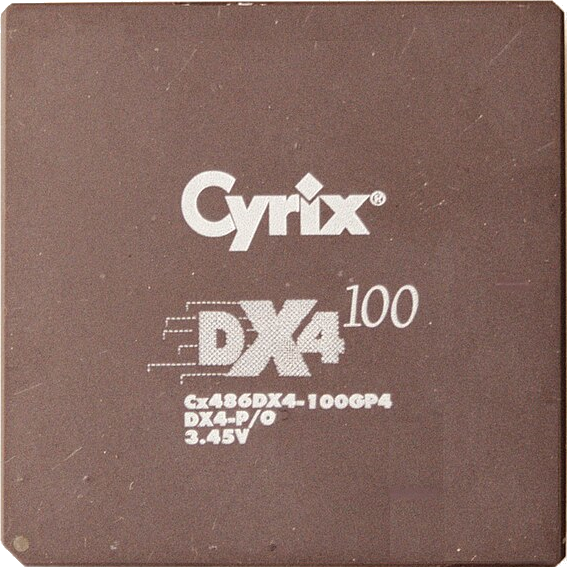I wonder if my system is good or bad. My server needs 0.1kWh.
50W-ish idle? Ryzen 1700, 2 HDDs, and a GTX 750ti. My next upgrade will hopefully cut this in half.
I think at max 200w? It runs a collection of fedi/self service stuff.
I also run a pi with a couple of apps on a pi 3 that sips power.
It’s a legitimate issue because it’s 50+ cents per killowat hour where I live so power is very expensive…
That seems really high, I think power where I live is about 12-14 cents per kilowatt hour. What makes it so expenses where you live?
Mostly just that they can. It’s more expensive per tier actually.
https://www.pge.com/assets/pge/docs/account/rate-plans/residential-electric-rate-plan-pricing.pdf
Take a look, this is the old pricing. They just voted to up it again.
There’s legislation that is moving along to charge people with solar because…idk.
They’re charging for solar because PGE is a greedy fuck.
Yes. There was talk locally for local government to take control of the power but it’s just talk…
It gets over 110 where I live in the summer…so air conditioning can make it very expensive.
Wait this is in the US? How, this is even more expensive than Hawaii, and they have obvious reasons for power to be more expensive there
PGE serves Northern California. They keep raising rates like 10-15% each year to cover their losses after all the wildfires a couple years ago and because of the greed.
Take note, folks. Watch this trend spread.
Yep. And they are talking about a couple more price hikes next year. Significant ones.
0.50 $/kWh is a normal price in Europe now
Damn, I wish ours was that cheap. We’re roughly $.30/kwh, mostly because our local poco is a reseller of SCE and we’re in a rural area.
that’s insane, i pay like 5¢ a KWh
Want to switch?
Holy shit. I’m paying less than 10c per kwh even in the “high usage” tier.
I wish that was ours…
Do you mean 0.1kWh per hour, so 0.1kW or 100W?
My N100 server needs about 11W.
The N100 is such a little powerhouse and I’m sad they haven’t managed to produce anything better. All of the “upgrades” are either just not enough of an upgrade for the money, it just more power hungry.
To my understanding 0.1kWh means 0.1 kW per hour.
It’s the other way around. 0.1 kWh means 0.1 kW times 1 h. So if your device draws 0.1 kW (100 W) of power for an hour, it consumes 0.1 kWh of energy. If your
devicefactory draws 360 000 W for a second, it consumes the same amount of 0.1 kWh of energy.Thank you for explaining it.
My computer uses 1kwh per hour.
It does not yet make sense to me. It just feels wrong. I understand that you may normalize 4W in 15 minutes to 16Wh because it would use 16W per hour if it would run that long.
Why can’t you simply assume that I mean 1kWh per hour when I say 1kWh? And not 1kWh per 15 minutes.
kWh is a unit of power consumed. It doesn’t say anything about time and you can’t assume any time period. That wouldn’t make any sense. If you want to say how much power a device consumes, just state how many watts (W) it draws.
Thanks!
A watt is 1 Joule per Second (1 J/s). E.g. Every second, your device draws 1 Joule of energy. This energy over time is called “Power” and is a rate of energy transfer.
A watt-hour is (1 J/s) * (1 hr)
This can be rewritten as (3600 J/hr) * (1 hr). The “per hour” and “hour” cancel themselves out which makes 1 watt-hour equal to 3600 Joules.
1 kWh is 3,600 kJ or 3.6 MJ
0.1kWh per hour can be written as 0.1kWh/h, which is the same as 0.1kW.
Thanks. Hence, in the future I can say that it uses 0.1kW?
Yes. Or 100W.
If this was over an hour, yes. Though you’d typically state it as 100W ;)
deleted by creator
You might have your units confused.
0.1kWh over how much time? Per day? Per hour? Per week?
Watthours refer to total power used to do something, from a starting point to an ending point. It makes no sense to say that a device needs a certain amount of Wh, unless you’re talking about something like charging a battery to full.
Power being used by a device, (like a computer) is just watts.
Think of the difference between speed and distance. Watts is how fast power is being used, watt-hours is how much has been used, or will be used.
If you have a 500 watt PC, for example, it uses 500Wh, per hour. Or 12kWh in a day.
I forgive 'em cuz watt hours are a disgusting unit in general
idea what unit speed change in position over time meters per second m/s acceleration change in speed over time meters per second, per second m/s/s=m/s² force acceleration applied to each of unit of mass kg * m/s² work acceleration applied along a distance, which transfers energy kg * m/s² * m = kg * m²/s² power work over time kg * m² / s³ energy expenditure power level during units of time (kg * m² / s³) * s = kg * m²/s² Work over time, × time, is just work! kWh are just joules (J) with extra steps! Screw kWh, I will die on this hill!!! Raaah
Power over time could be interpreted as power/time. Power x time isn’t power, it’s energy (=== work). But otherwise I’m with you. Joules or gtfo.
Whoops, typo! Fixed c:
Could be worse, could be BTU. And some people still use tons (of heating/cooling).
kWh is the stupidest unit ever. kWh = 1000J/s * 6060s = 3.610^6J so 0.1kWh = 360kJ
If you have a 500 watt PC, for example, it uses 500Wh, per hour. Or 12kWh in a day.
A maximum of 500 watts. Fortunately your PC doesn’t actually max out your PSU or your system would crash.
AiBot post. Fuck this shit.
Can you please explain?
My servers (an old desktop overstuffed with drives and an old dell laptop), networking gear and a 50 gal aquarium all run on the same outlet. As long as the aquarium heater is off, the outlet pulls about 200 watts. The aquarium heater spikes that to 400 watts when it kicks in.
Idle: 30 Watts
Starting all docker containers after reboot: 140 Watts
It needs around 28 kWh per month.
last I checked with a kill-a-watt I was drawing an average of 2.5kWh after a week of monitoring my whole rack. that was about three years ago and the following was running in my rack.
- r610 dual 1kw PSU
- homebuilt server Gigabyte 750w PSU
- homebuilt Asus gaming rig 650w PSU
- homebuilt Asus retro(xp) gaming/testing rig 350w PSU
- HP laptop as dev env/warmsite ~ 200w PSU
- Amcrest NVR 80w (I guess?)
- HP T610 65w PSU
- Terramaster F5-422 90w PSU
- TP-Link TL-SG2424P 180w PSU
- Brocade ICX6610-48P-E dual dual 1kw PSU
- Misc routers, rpis, poe aps, modems(cable & 5G) ~ 700w combined (cameras not included, brocade powers them directly)
I also have two battery systems split between high priority and low priority infrastructure.
Ugh, I need to get off my ass and install a rack and some fiber drops to finalize my network buildout.
would love to add more fiber to my diet! if I had the time and money. next four years is going to get pricy so I’m solidifying my stack now with backup hardware and planning for failures.
the brocade is running my pvt lan since it’s the most important. physically cut off public access. just upgraded most my servers to use 10gbe and would love to run fiber to my office about 60-70 feet away.
the brocade I’m using was unlocked by the eBay seller I got it from, so it can theoretically transfer up to 40g. would be great for my AI rig I keep in the office.
I was drawing an average of 2.5kWh after a week of monitoring my whole rack
That doesn’t seem right; that’s only ~18W. Each one of those systems alone will exceed that at idle running 24/7. I’d expect 1-2 orders of magnitude more.
IDK, after a week of runtime it told me 2.5kwh average. could be average per hour?
Highest power bill I ever saw was summer of 2022. $1800. temps outside were into to 110-120 range and was the hottest ever here.
maybe I’ll hook it back up, but I’ve got different (newer) hardware now.
after a week of runtime it told me 2.5kwh average. could be average per hour
If it gives you kWh as a measure for power, you should toss it because it’s obviously made by someone who had no idea what they were doing.
Is there a (Linux) command I can run to check my power consumption?
If you have a server with out-of-band/lights-out management such as iDRAC (Dell), iLO (HPe), IPMI (generic, Supermicro, and others) or equivalent, those can measure the server’s power draw at both PSUs and total.
If you have a laptop/something that runs off a battery,
upowerGet a Kill-a-Watt meter.
Or smart sockets. I got multiple of them (ZigBee ones), they are precise enough for most uses.
With everything on, 100W but I don’t have my NAS on all the time and in that case I pull only 13W since my server is a laptop
80-110W
My whole setup including 2 PIs and one fully speced out AM4 system with 100TB of drives a Intel Arc and 4x 32gb ecc ram uses between 280W - 420W I live in Germany and pay 25ct per KWh and my whole apartment uses 600w at any given time and approximately 15kwh per day 😭
I came here to tell my tiny Raspberry pi 4 consumes ~10 watt, But then after noticing the home server setup of some people and the associated power consumption, I feel like a child in a crowd of adults 😀
we’re in the same boat, but it does the job and stays under 45°C even under load, so I’m not complaining
I have an old desktop downclocked that pulls ~100W that I’m using as a file server, but I’m working on moving most of my services over to an Intel NUC that pulls ~15W. Nothing wrong with being power efficient.
Quite the opposite. Look at what they need to get a fraction of what you do.
Or use the old quote, “they’re compensating for small pp”
I’m using an old laptop with the lid closed. Uses 10w.
All in, including my router, switches, modem, laptop, and NAS, I’m using 50watts +/- 5.
It does everything I need, and I feel like that’s pretty efficient.
The PC I’m using as a little NAS usually draws around 75 watt. My jellyfin and general home server draws about 50 watt while idle but can jump up to 150 watt. Most of the components are very old. I know I could get the power usage down significantly by using newer components, but not sure if the electricity use outweighs the cost of sending them to the landfill and creating demand for more newer components to be manufactured.
17W for an N100 system with 4 HDD’s
Which HDDs? That’s really good.
Seagate Ironwolf “ST4000VN006”
I do have some issues with read speeds but that’s probably networking related or due to using RAID5.
That’s pretty low with 4 HDD’s. One of my servers use 30 watts. Half of that is from the 2 HDD’s in it.
@meldrik @qaz I’ve got a bunch of older, smaller drives, and as they fail I’m slowly transitioning to much more efficient (and larger) HGST helium drives. I don’t have measurements, but anecdotally a dual-drive USB dock with crappy 1.5A power adapter (so 18W) couldn’t handle spinning up two older drives but could handle two HGST drives.















